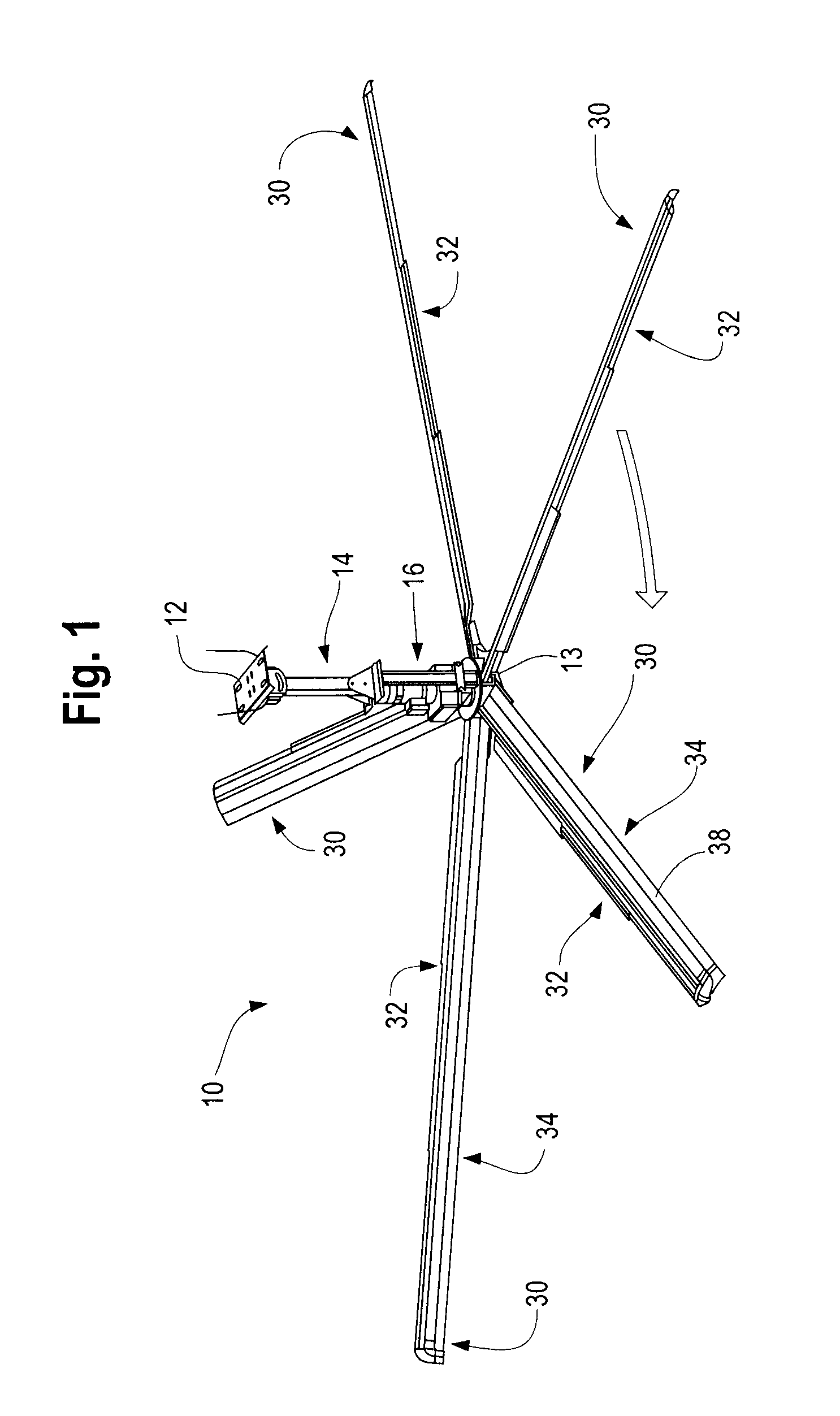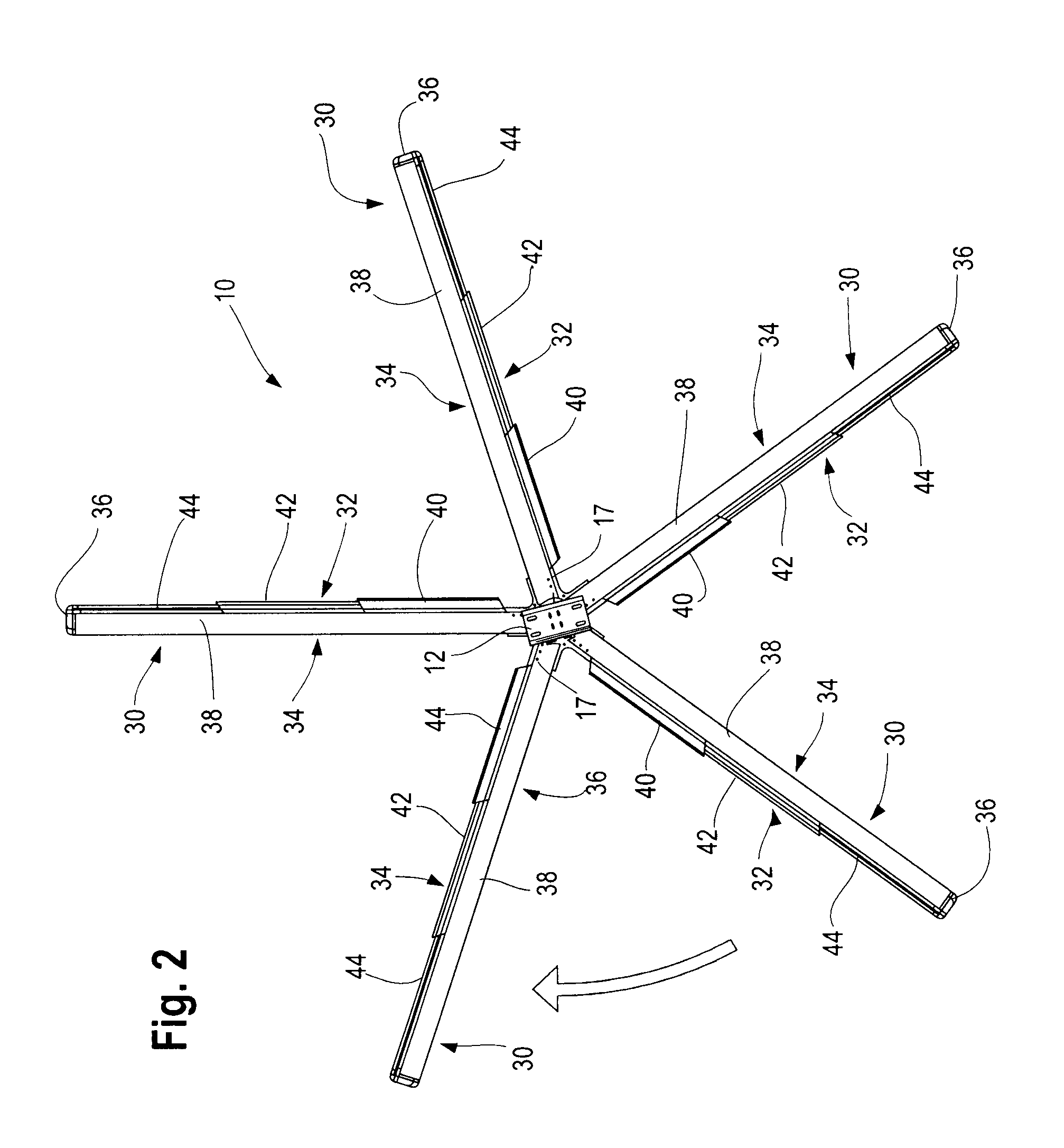Stepped-louvre heating, ventilating and air conditioning unit used in high-velocity, low speed fan
a technology of heating, ventilation and air conditioning unit, which is applied in the direction of lighting and heating apparatus, liquid fuel engines, heating types, etc., can solve the problems of large areas dramatic increase in energy consumption, and large area of dead air outside the diameter of the fan blades. achieve greater airflow balance, greater airflow velocity, and greater coverage area
- Summary
- Abstract
- Description
- Claims
- Application Information
AI Technical Summary
Benefits of technology
Problems solved by technology
Method used
Image
Examples
Embodiment Construction
[0039]A typical high-volume, low-speed fan has between four to eight fan blades. The fan blades are typically between 4-feet to 12-feet in length and have a width of 6 inches. Thus, the total diameter of a typical fan is between 8-feet (96 inches) to 24-feet (288 inches).
[0040]In the preferred embodiment of the present invention, as shown in FIGS. 1, 2 and 2(a), the fan 10 is mounted to a ceiling 20. The fan 10 is mounted to the ceiling 20 using a standard mount such as a universal I-Beam clamp with a swivel 12. The fan 10 may include an optional drop extension 14 that is 1 foot, 2 foot, 4 foot or more in length, depending upon the distance from the ceiling to the floor. At the end of the drop extension 14 is a gear motor 16. The motor 16 is typically an electromagnetic motor. The horsepower of the motor varies depending upon the diameter of the entire fan 18. For example, an 8-foot and 12-foot fan typically has a 1 horsepower motor 16. The 16-foot fan typically includes a 1.5 horse...
PUM
 Login to View More
Login to View More Abstract
Description
Claims
Application Information
 Login to View More
Login to View More - R&D
- Intellectual Property
- Life Sciences
- Materials
- Tech Scout
- Unparalleled Data Quality
- Higher Quality Content
- 60% Fewer Hallucinations
Browse by: Latest US Patents, China's latest patents, Technical Efficacy Thesaurus, Application Domain, Technology Topic, Popular Technical Reports.
© 2025 PatSnap. All rights reserved.Legal|Privacy policy|Modern Slavery Act Transparency Statement|Sitemap|About US| Contact US: help@patsnap.com



